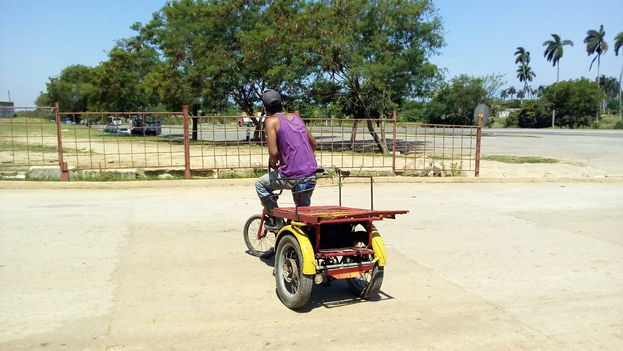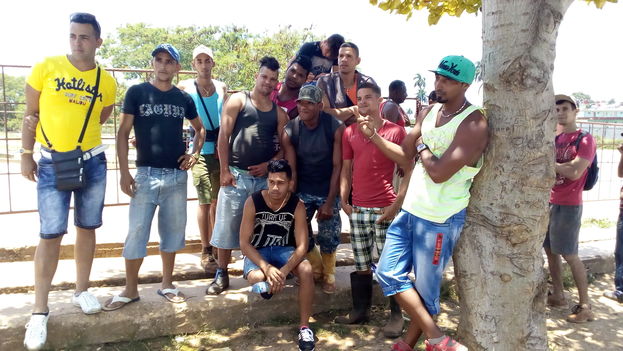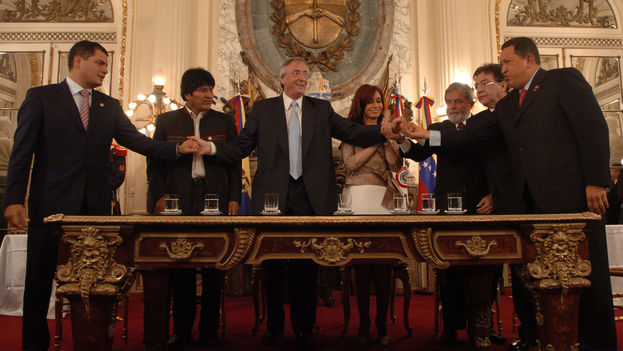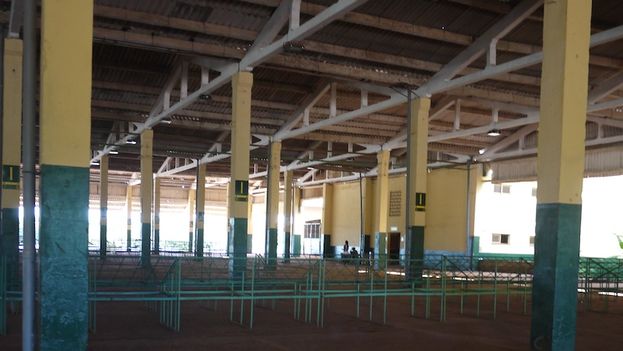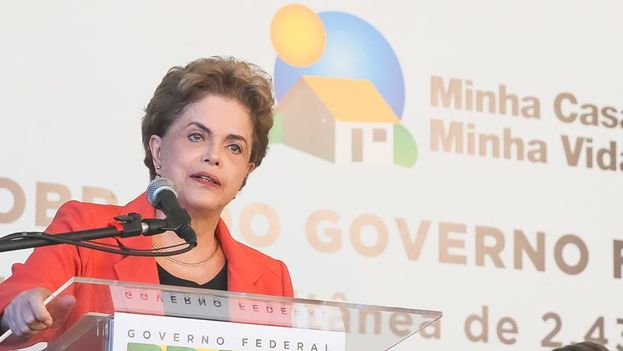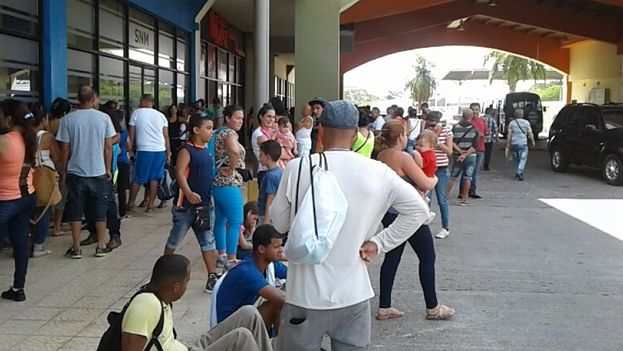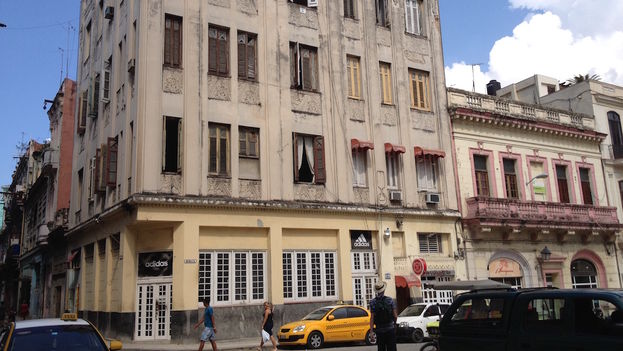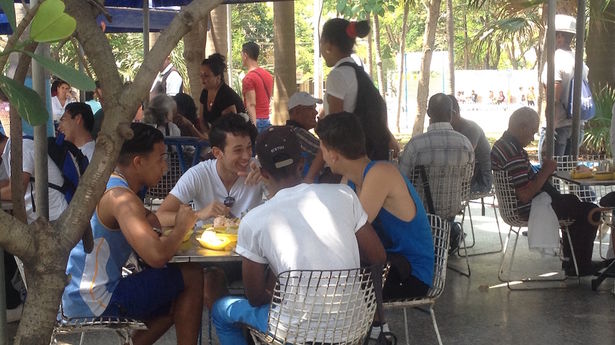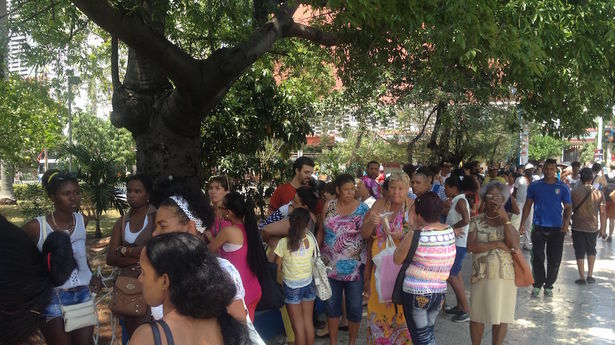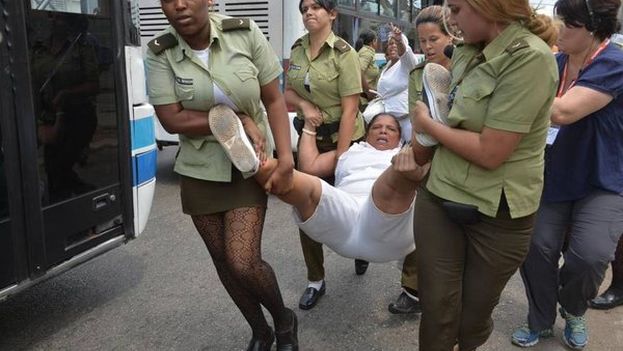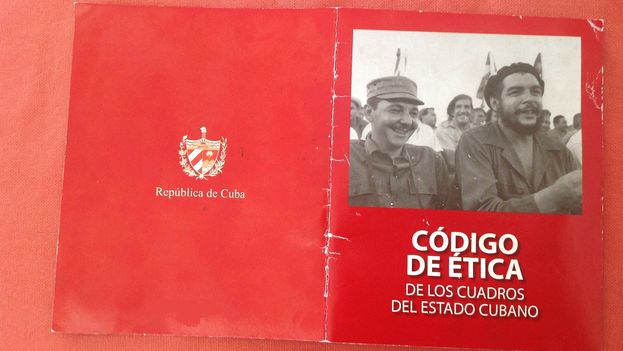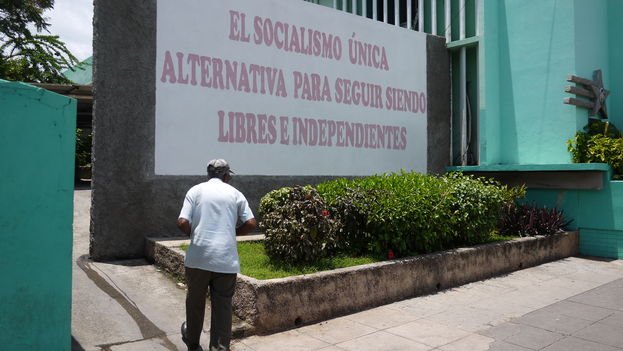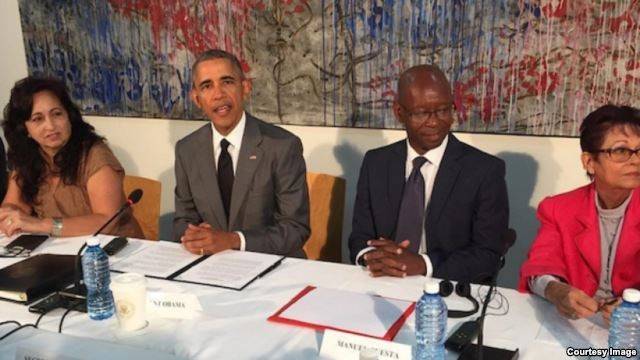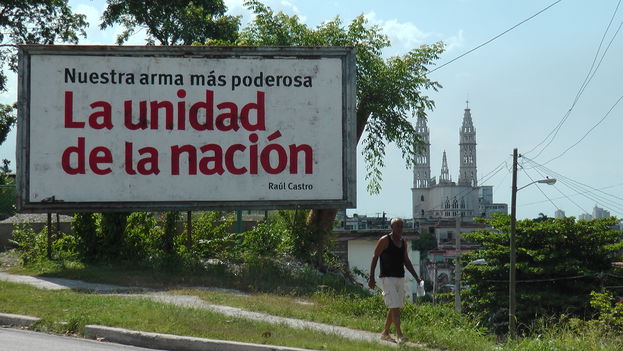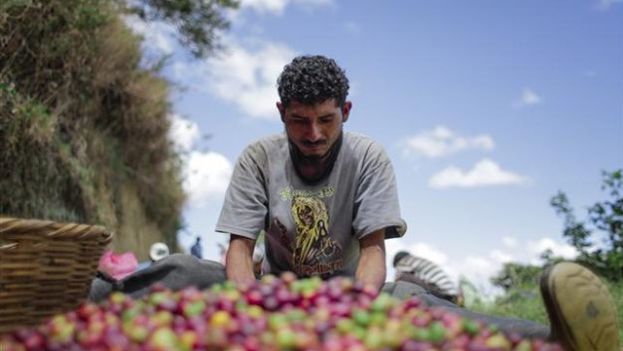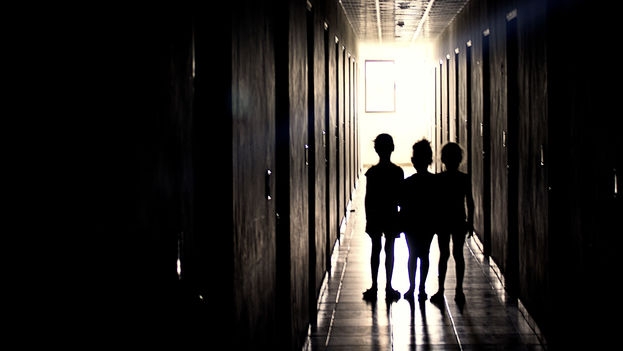14ymedio, Manuel Cuesta Morua, Havana, 8 May 2016 — The only certainty in Cuba in political terms is that the government accumulates a lot of power but lacks leadership. The kind of leadership required when a country faces an economic challenge, or a cultural, sociological, information, knowledge and generational one, plus the obvious dangers of any new era. They could all be summarized, therefore, by the following: how to manage the Government to maintain a political model that is beneath the basic intelligence, the accumulated experience of Cuban society and cultural pluralism?
Faced with this dilemma, the government has sacrificed the possible options for a new leadership before the metaphysics of the Revolution.
But, 57 years later, can we speak, beyond a memory and a name, of the Cuban Revolution? From the point of view of conviction—a psychological support—there is no doubt it exists. It is this kind of conviction that founds religions and that can only be respected in its specific dimensions. But from the point of view of its initial proposals, the Cuban Revolution has long since dissolved its only assumable scope: the external independence and sovereignty of Cuba. continue reading
Those who defend the Cuban government using the record of the Revolution, never satisfactorily answer these two questions: Is Cuba the only country where healthcare and education are free? Is it legitimate for current generations to express the need for another revolution? A revolution that blocks the possibilities of other futures is not a revolution made by revolutionaries.
But from the point of view of its initial proposals, the Cuban Revolution has long since dissolved its only assumable scope: the external independence and sovereignty of Cuba
But the revolutionaries do not surrender, not even in the face of clear evidence that the Cuban Revolution no longer exists because, beyond its convictions and proposals, it was, by nature, conservative. I offer the example par excellence for the followers of cultural studies and their relationship to political models: faced with three subjects that, by their anthropological condition gave substance to every emancipatory revolution of the 20th century, and within diverse societies, the Cuban government launched an active defense that closed the possibilities for a coherent social, political and cultural modernization, in line with global dynamics: the movements of feminists, blacks and the homosexuals. This was an early sign of the conservative nature of the 1959 project.
Moreover, the closing of Cuba with respect to the initial freedom that in the ‘60s of the 20th century citizens around the world began to respond to, the freedom of movement, was the hallmark of this conservatism that disconnected Cubans from their foundational dynamic as a country. And the Revolution’s reaction in the face of the impact of technology was and is antediluvian: witness the political impact on the regime of technological processes that are democratizers in their own right. Nor today, in Cuba, are these matters are discussed—present here despite and against the policies of the state—but they have been incorporated for a long time into the reality of most nations, from Haiti to Sweden.
By its nature, the Cuban Revolution is the last expression, in the 20th century and so far in the 21st, of the criollo modernization project, with its two clearest models: the expanded model of the plantation-economy export-power, and the restricted model of farm-bodega-control, more anchored in the structure of the Spanish conquest of the Americas.
This project of modernization began its long march with the hegemonic invention of Cuban in the 19th century. And this criollo conservatism was updated through a dictatorship of social benefit that created, with the Cuban Revolution, the second Jesuit state of the Western Hemisphere, after the state of the same kind founded by Dr. José Gaspar Rodríguez de Francia in Paraguay in the 19th century.
This criollo conservatism was updated through a dictatorship of social benefit that created, with the Cuban Revolution, the second Jesuit state of the Western Hemisphere
Now, facing a crisis, it has no more economic imagination than that of the restoration of old models: the development of tourism, that was Fulgencio Batista’s celebrated project cut short, and the development of a port, this one in Mariel, which was the most “modernized” project possible for the Spanish metropolis.
The most important achievements of this Revolution, then, have to do with its ability—taking as a starting point its own definition of itself—to arrest poverty at the limits of misery exhibited by many Third World countries, and with its confrontational visibility with the first power in the world: the United States. This was a never a project for the future.
These success of image and minimal cohesion fed a certain romanticism on both the left and the right, often at the edge of political obscenity, of the darkness of history before 1959, of cultural racism, and of a vision of post-imperialist borders for its constant opposition to the policies of the United States. They masked the conservative structure of the society encouraged by the Revolution, and the revolutionary imperialism toward the Third World: in the form of ‘missions’–military, medical and educational.
The conservative revolution, for 57 years, has triumphed. This allows us to understand how it became a movement of diminishing expectations, how it made the ration book a virtue, how it made a desire for modernization counterrevolutionary and exchange with the United States a problem of national security. This latter, taken to the limit, has meant a cultural weakening of the country in the face of the challenge represented by the United States in terms of the cultural continuity of Cuban society—we could speak of the cultural ripe fruit—and an exhaustion of the Cuban project in its inability to project and continue its policies in an era of full globalization. To the extent that this criollo project has tried to identify itself with the fundamentals of Cuba, it also endangers the viability of the nation.
To the extent that this criollo project has tried to identify itself with the fundamentals of Cuba, it also endangers the viability of the nation
As a criollo project, with one foot in the structure of colonial Spain, the Cuban Revolution is a project of hegemony and domination that has legitimized the “counterrevolution,” only the one made by the revolutionaries in power.
The original 1959 contract updated itself in 1961 styling itself as socialist; and updated itself again in 1976 with a Constitution that established the hegemony and superiority of the communists; it broke in 1980 with the events at the Peruvian embassy and the resulting Mariel Boatlift; it updated itself again in 1992, with the admission of another moral universe within the Communist Party with the laicization of the state; and it broke again in 1994 with the Malecon Uprising in Havana; and it is trying to re-update itself with the liberalization of the markets in food and other areas, which subsequently are distorted.
Throughout all this time, the government has done one thing and then the opposite to remain in power, regardless of economic, social or political practices that have been in absolute contradiction with earlier or later ones. All in the name of the Cuban Revolution. Every one of these “revolutions” and “counterrevolutions” carried out by a power ever more divorced from society and that allowed them, finally, in 2002, to rethink their organic relation with citizens.
Yes, “Within the Revolution, everything,” but “within the counterrevolution, also,” is the epilogue of the political process launched in 1959.
Incapable of criticizing its fundamentals—unlike representative democracies, the Cuban Revolution does not permit a discussion based on its pillars, which explains its lack of democracy—the government undertook a constitutional reform in 2002, an authentic political counter-reform, which was the ultimate and definitive rupture between the criollo project and Cuban citizens.
On constitutionally declaring the “irreversibility of socialism,” the government pulverized the constitutional precedents of the founding of Cuba. From our origins as a national project, these assimilated, without contradictions, the unity of subject and sovereign that is the base of the modern citizen. Subject to the law, sovereign to shape it, we Cubans lost with this counter-reform the condition of citizens and the organic relationship with a state that only knows and cares how to justify itself.
Starting from here it became clear that for the state we Cubans are only a source of duties, not of sovereignty. Thus, the republican nature of Cuba is dissolved, establishing a political “contract” to block any future contract. An aberration that must have few precedents in the constitutional history of the world.
If we want to understand, then, why the relationship of Cubans with their state is fundamentally cynical, when it should be an ethical relationship, the reason can be found in this static fluidity that the Cuban Revolution has established with society, based on the assumption that what is, is not, but should continue to remain as if it were, to achieve mutual survival amid the blackout of our future and the suspension of all strategic perspective.
The complicity and mutual deception that the society-state comes to forge, over the span of 57 years, that modus vivendi has dissolved more than one hope and has placed the country at a dead end. Corruption as a zone of shared tolerance both by power and by citizens, in the midst of a vital tension, is a clear example of the progressive national collapse and crashing demoralization of the decent foundations of coexistence.
The last definition of the Cuban Revolution, offered by Fidel Castro on May Day of 2000, is reducible to the phrase, “change everything that should be changed,” when a revolution is defined by changing everything, only confirms the diagnosis: for 50 years the Revolution has made a costly transition from justification based on its essences to justification based on its circumstances. In this sense, “counterrevolution” and “revolution” are vacant words fixed in the general vocabulary of society for the purpose of psychological control.
Outside of this—and only for a tiny minority of honest men and women who have a sense of communion in the work and defense of a past that doesn’t contradict the answer to this question: What, ultimately, is the Cuban Revolution?
It is this: Power and its circumstances defined both by a rogue state, which was updated, at the recently concluded 7th Congress of the Cuban Communist Party, with a bad monarchic joke: Our bipartisanship will bring together the same surnames, Castro Ruz.
From this irresponsible rogue state we must move to the responsible reconstruction of a national project that is anchored in something less metaphysical and more promising: a democratic state governed by the rule of law.
Part 1 of this article is here.
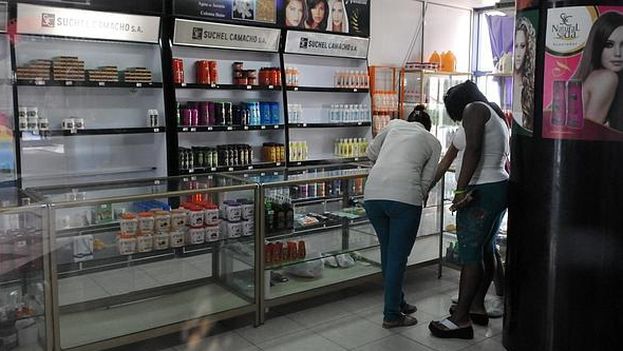
![]() 14ymedio, 17 May 2016 – The Cuban government has published an “official note” announcing price reductions for products sold in Cuban convertible pesos (CUC) which will go into effect on Tuesday. The measure is aimed at “gradually increasing the purchasing power of the Cuban pesos (CUP),” explained the Ministry of Finances and Prices in the announcement read on primetime television news this Monday.
14ymedio, 17 May 2016 – The Cuban government has published an “official note” announcing price reductions for products sold in Cuban convertible pesos (CUC) which will go into effect on Tuesday. The measure is aimed at “gradually increasing the purchasing power of the Cuban pesos (CUP),” explained the Ministry of Finances and Prices in the announcement read on primetime television news this Monday.
